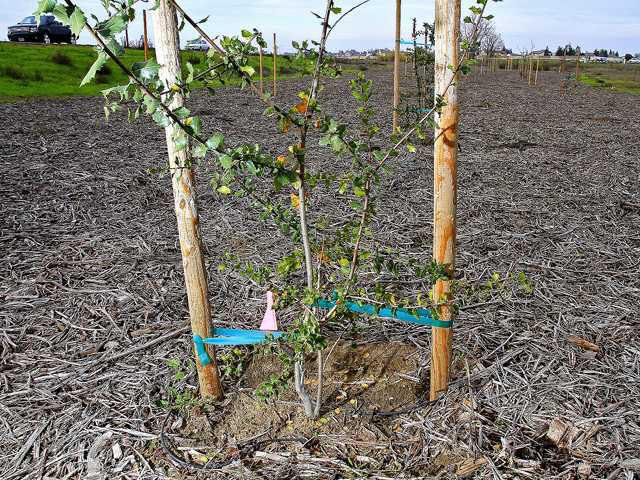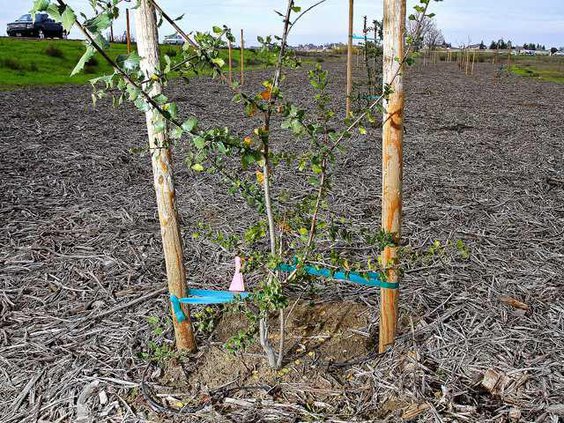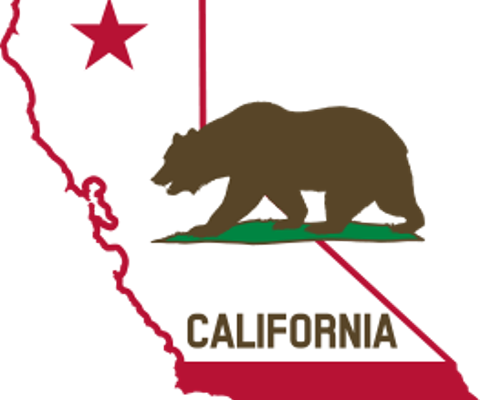It’s the $2 million question: Now that a three-year maintenance contract has expired for landscaping planted along the 120 Bypass and Highway 99 corridor will it survive the drought?
If it doesn’t spending $2 million in federal stimulus money under the American Recovery Act will have been for naught.
The City Council on Tuesday is scheduled to accept the contract with Suraez and Munoz Construction as complete for the Highway 99/120 Bypass Corridor Landscaping Project. All work has been completed including the three-year maintenance period. At the same time, city staff has determined no plant replacement is needed.
That means the landscaping project that cost $2,005,742.77 will be officially turned over to Caltrans for ongoing maintenance. Not a penny of that was city money as all of it came from the federal government. It is the biggest freeway landscaping project ever undertaken in the Northern San Joaquin Valley.
Originally, Manteca was moving forward with the Yosemite/99 landscaping project when it heard that the federal stimulus money for highways included a landscaping component. Since the project was ready to go, city leaders approached the San Joaquin Council of Government that serves as regional clearing house for state and federal transportation funds about maybe adding the second interchange into the mix. The securing of the federal funds meant Measure K money committed to the project was able to be used for other freeway landscaping elsewhere within San Joaquin County.
The city is responsible only for the ongoing maintenance costs of the landscaping at the Yosemite Avenue and Highway 99 interchange. The rest is the responsibility of Caltrans.
The centerpiece of the landscaping project design is the Highway 99/120 Bypass interchange. When it reaches maturity, the interchange landscaping will resemble woodlands .It is the first time Caltrans has employed such a design that relies heavily on trees and shrubs that require less water and therefore are more suitable to the valley’s weather patterns.
The planting scheme called for taller trees in the back with heights scaling downward towards the roadway. The evergreen trees picked for the back were similar to the ones you’ll find along Center Street and the west side of Morezone Field.
Others in the mixture includes several oak trees, western red buds, Chinese pistache, and several others.
They were planted with chicken wire to protect roots from gophers.
At the same time mulch was placed in such a manner to serve as a fire break to slow down any fires to allowing firefighters a chance to knock down grass fires hopefully in time before they can damage trees. Designing fire breaks coupled with the fact mature woodlands is expected to minimize the growth of weeds plus block winds could ultimately mean that fires which are a routine occurrence on all quadrants of the interchange during the dry season will be substantially reduced.
Manteca’s last fire fatality was during a grass fire 11 years ago at the Highway 120 and Highway 99 interchange when thick smoke disorientated an elderly driver and he drove into the burning dry grass where his passenger died.
More than 1,700 trees and shrubs were planted as part of the project.
The council meets at 7 p.m. Tuesday at the Civic Center, 1001 W. Center St.
Will $2M landscaping survive?
Survival of trees, shrubs now Caltrans concern





